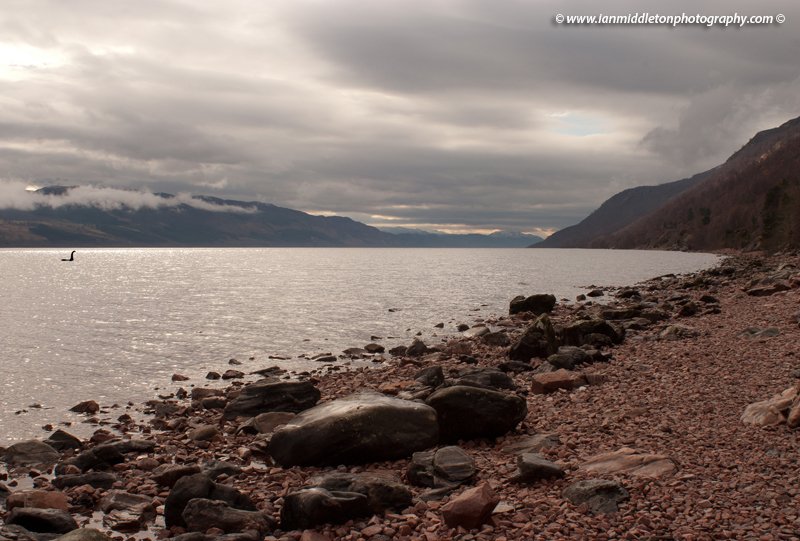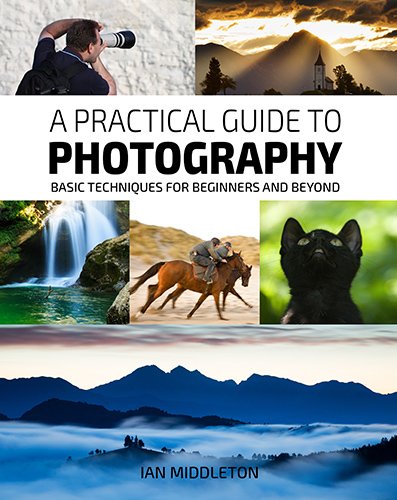Nessie, the elusive Loch Ness Monster
Creeping slowly and carefully out of the hostel dormitory at an ungodly hour just before sunrise, trying not to wake the only other occupant who had kept me awake anyway with his monster snoring, I made my way bleary-eyed to the car and headed to the shore of Loch Ness. Parking in the car park at Urquart Castle, I found a spot, set up my tripod and camera and prepared for the sunrise, and for Nessie.
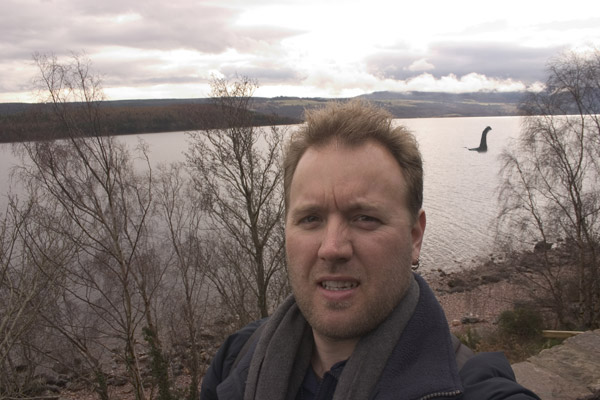
The Legend of the Loch Ness Monster
The legend of the Loch Ness monster is one that has fascinated scientists and tourists alike for centuries. I was no different, having read numerous accounts of his sighting. Loch Ness is a vast body of water, stretching 23 miles in length and 600 feet in depth. The most famous sighting was in 1934, when a British gynaecologist called Robert Kenneth Wilson produced a photograph of a creature in the water with a long neck and large body protruding from the murky water. This photo became one the most famous images ever shot of Nessie, and sparked a flurry of tourists and monster hunters all flocking to the lake to catch their glimpse. In 1994 it was revealed that the photo was a hoax, when the surgeon admitted on his death bed that he used a model submarine and fitted it with the head of a toy sea serpent.
However, this was not the only photo taken of Nessie, and although some are also claimed to be hoaxes, others cannot be verified. But the legend of Nessie goes way back beyond the 20th century sightings. As far back as the sixth century there have been stories of a large aquatic creature living in the loch. The earliest account was of the Irish Saint Columba who, after his self-imposed exile from Ireland, came to Scotland and visited Loch Ness in 565AD. According to one story, the saint rescued a man from the clutches of a giant monster in the lake by repelling the creature with the sign of the cross.
Drumnadrochit
Since childhood I’d wanted to visit Loch Ness and embark upon my own Nessie hunt, and finally I got the chance. Work had brought me to Scotland for a week and so I had decided to spend the weekend. In the little village of Drumnadrochit is the Loch Ness Backpackers hostel, which is a great budget option with friendly and helpful staff. It’s also located just a stone’s throw away from Urquart Castle and the lake; perfect for monster hunters!!
Urquart Castle
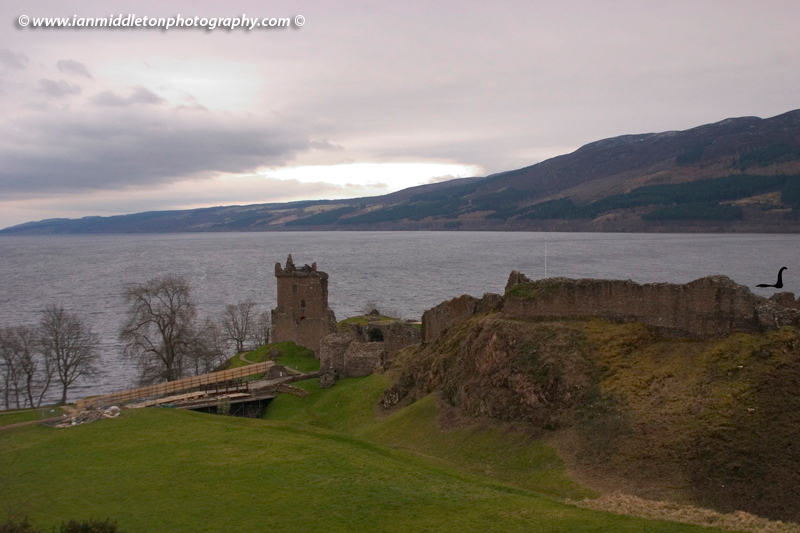
The castle ruins sit on the rocky promontory of Strone Point, and many sightings of Nessie have been made from here; many probably during walks home from the pub. The castle was once a stronghold of Robert the Bruce, until being blown up by the English in 1692. I had hoped to get a nice sunrise shot with Nessie silhouetted against the backdrop of the loch, but thick cloud thwarted that idea, closely followed by heavy rain. I packed up my equipment and dived back into the car.
Raining.
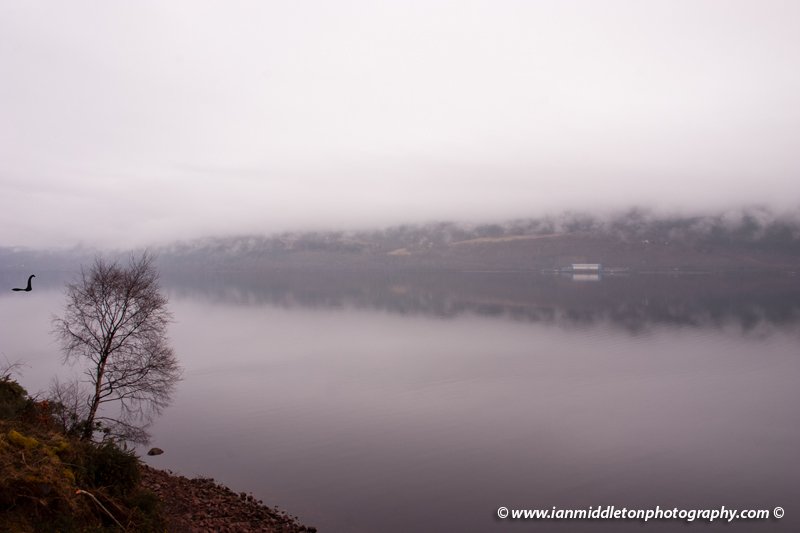
It rained for the rest of the day, so I spent it in the car driving around. But it seemed that Nessie doesn’t come out in the rain. The next morning I had to leave for Aberdeen, so I took a leisurely drive south along the A82, which runs alongside the loch. I pulled over every now and then to take photos, still keeping a sharp eye out for any mysterious shapes in the water. But it seemed that Nessie was being camera shy today.
Fort Augustus
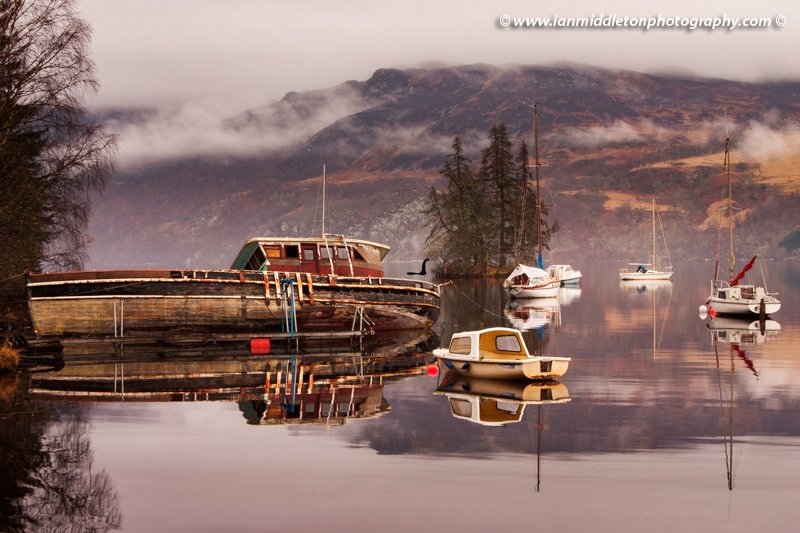
Here I turned off onto the B862 which looped me back north along the other side before heading east.
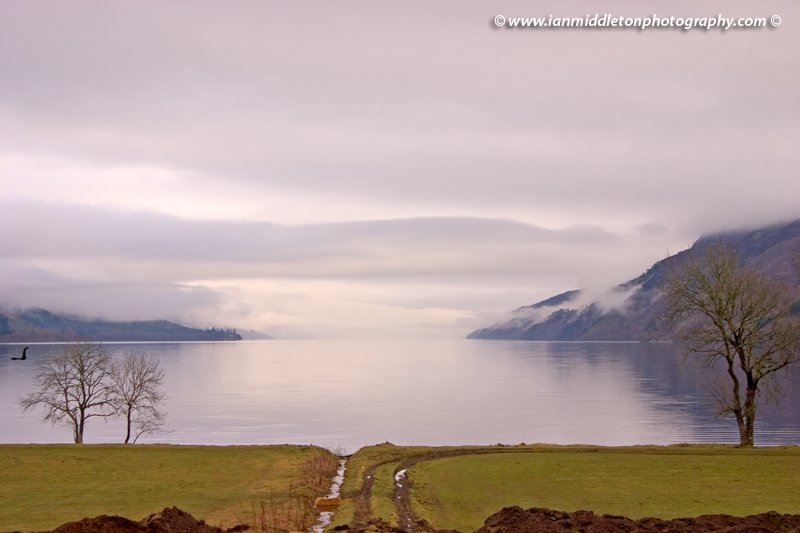
No Luck spotting Nessie
It would have been extremely lucky of me to have actually spotted Nessie in such a short visit. People have camped out for weeks without a single sighting. Does it exist? Well, there have been so many sightings over the centuries that it’s hard to dismiss the idea. Locals have known of this for hundreds of years, often telling their children to stay away from the Kelpie in the lake. It’s entirely possible for aquatic wildlife to live here undetected in its murky depths. Due to the high peat content, the loch’s visibility is virtually zero. The water is so cold that anything that died would not float to the surface and would quickly be devoured by other creatures. Some scientists claim that Nessie is a plesiosaur, an aquatic dinosaur that somehow survived to this day, and that there are actually several of them.
As I headed away from the loch, I still believed that Nessie was there and that perhaps one day when I return, he may show himself to me on another photo shoot one misty morning.
To read more about Fort Augustus, check out this blog by Graham Grieve
